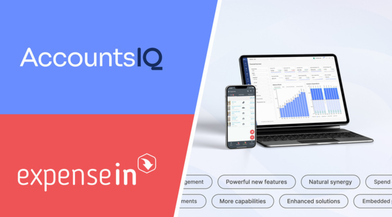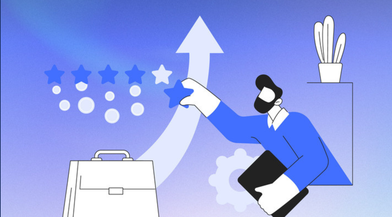In a world where every financial decision matters, how you manage your data can make or break your next big move. Whether you’re a CFO on the front lines of a fast-scaling enterprise or a finance manager juggling multiple entities, the choice between cloud and legacy accounting software isn’t just about tech preference; it’s about getting visibility, speed, and control.
This isn’t another fluff piece about ‘digital transformation’ just for the sake of it. But if you’re looking for a no-nonsense look under the hood at how your accounting system shapes how you see and act on your financials, then you’re in the right place. Let’s jump in.
What modern cloud software brings to the table
1.Real-time data you can actually use
Cloud accounting software gives you a clear line of sight into your numbers, live. That means no nasty surprises at month-end, and significantly more control in your day-to-day. You don’t need to be stuck at your desk to check a P&L or approve transactions. You just log in and get the job done, wherever you are, whenever it suits you.
This level of visibility empowers finance teams working across locations to do more, and do it better. It goes beyond convenience; it’s about having a clear, current view of cash flow and performance at all times, not just during that frenzied rush to close.
2. Integration with your entire tech stack
Cloud systems aren’t trying to operate in a vacuum. The best ones plug into your wider ecosystem—ERP, CRM, reporting tools—so data flows automatically across the business.
If you're managing multiple subsidiaries, this level of integration also makes consolidated reporting smoother and faster. And that means no more exporting CSVs or endlessly emailing spreadsheets around for sign-off. Everything speaks to everything.
3. Automation to free up resource
Bank feeds, invoice processing, approvals, journals; cloud platforms take care of repetitive tasks so your team can spend more time on what matters. It frees up time for them to actually dig into the numbers, not just collect them.
And no, that doesn’t mean replacing good people. It means giving your already-skilled finance team more room to do what only they can do: spotting patterns, highlighting risks, and helping drive better decisions for your organisation.
Why some businesses stick with legacy system
1. Familiarity and stability
Legacy systems have often been in place for years, sometimes decades. They’re built around your processes. Your team knows them inside out. They rarely go down.
There’s comfort in familiarity. And in industries with strict regulatory oversight, stability sometimes wins over innovation. That’s why you’ll still find legacy software running quietly behind the scenes in sectors like manufacturing, healthcare, or government.
2. Locked-down security
On-premise setups are physically controlled and often have rigorous access protocols. For some businesses, that feels safer than trusting the cloud, particularly those handling sensitive or confidential data.
But even then, cloud providers now have bank-grade encryption, ISO certification, and continuous monitoring with compliance in mind. Any lingering security gap between cloud and legacy is closing fast, if it’s not already shut tight.
3. Fear of growing pains
Upgrading from your legacy system can be expensive and disruptive, with some cloud providers taking several months to get you up and running. Depending on your specifics, you might need a full IT project team, significant downtime windows, and maybe even data reformatting. Not exactly a day in the park, right?
But the bigger issue is how long it takes to get new features. Most legacy systems only see significant updates once or twice a year, if that, slowing down innovation and potentially limiting your ability to keep up with evolving compliance rules or reporting needs.
The reporting reality check
Cloud systems offer built-in dashboards, automated reports, and real-time analytics. You’re not just tracking transactions—you’re spotting trends as they emerge.
Unless they’re heavily customised, legacy systems tend to be less malleable. Reports often need to be pulled manually, formatted externally, or wrangled into shape via Excel.
If your board packs take a week to assemble, that’s not a tech issue—it’s a visibility issue. Cloud accounting provides the tools your team needs to build reports that grow with your business.
Cost isn’t all about the money
Legacy systems usually involve upfront licensing fees, dedicated servers, IT support, and hardware maintenance. Cloud platforms work on a subscription model, where you pay per month, per user or entity. This tends to be more flexible and scalable as you grow your business.
But don’t just compare invoices. Think about what your team could do with 10 extra hours a week freed from manual reporting. That time has value. So does the reduced risk of error when systems talk to each other automatically.
Migration doesn’t have to be a chore
Yes, moving to the cloud takes planning. Data migration, staff training, process tweaks—it all adds up. But it’s not 2010 anymore. Modern cloud providers offer onboarding specialists, templates, and tools to smooth the switch.
The key? Start with your reporting needs. Work backwards from the outputs you want to deliver. That way, you’re not just replicating old processes—you’re improving them.
Case study: E&J Estates venture into the cloud
When E&J Estates learned that Sage Financials was being discontinued, they needed a swift and effective solution to manage their multi-entity property operations.
In just two months, they moved to a cloud-based accounting system, streamlining the management of legal entities. But let’s take a closer look at the numbers around their success:
•20 legal entities consolidated within a single platform
•Year-end accounts production time reduced from 4 months to 6 weeks, with a target of 1 month
•Simplified intercompany accounting, ensuring accurate and trustworthy consolidated accounts
•Real-time reporting capabilities enhance decision-making processes
•Customised reporting for specific needs, including percentage reporting for irrecoverable VAT and Group VAT reporting for Making Tax Digital (MTD)
•A user-friendly interface allowed the finance team to focus more on analysis rather than data processing
This upgrade didn’t just improve efficiency, but provided E&J Estates with more confidence in their data, driving more informed business decisions.
So, what should you do now?
Let’s be honest: there’s no one-size-fits-all answer here. If your legacy system is working well, your reporting is sharp, and your compliance is covered—great. But if you’re spending more time formatting than forecasting, it might be time to rethink things.
Cloud accounting isn’t about going after the latest shiny toy. It’s about building a finance function that’s fast, flexible, and forward-looking. The kind that doesn’t just deliver the numbers, but helps shape the strategy. Before making the move, ask:
- Do we have the visibility we need right now?
- Are we duplicating work across teams or entities?
- Can we scale our reporting without scaling our headcount?
If the answer to those is “not quite,” you’re probably ready to leave legacy systems in the dust.
Kelly Dent is a writer and editor with over 10 years’ experience across a range of industries, from accounting and AI to cloud technology, entrepreneurship, and beyond.

